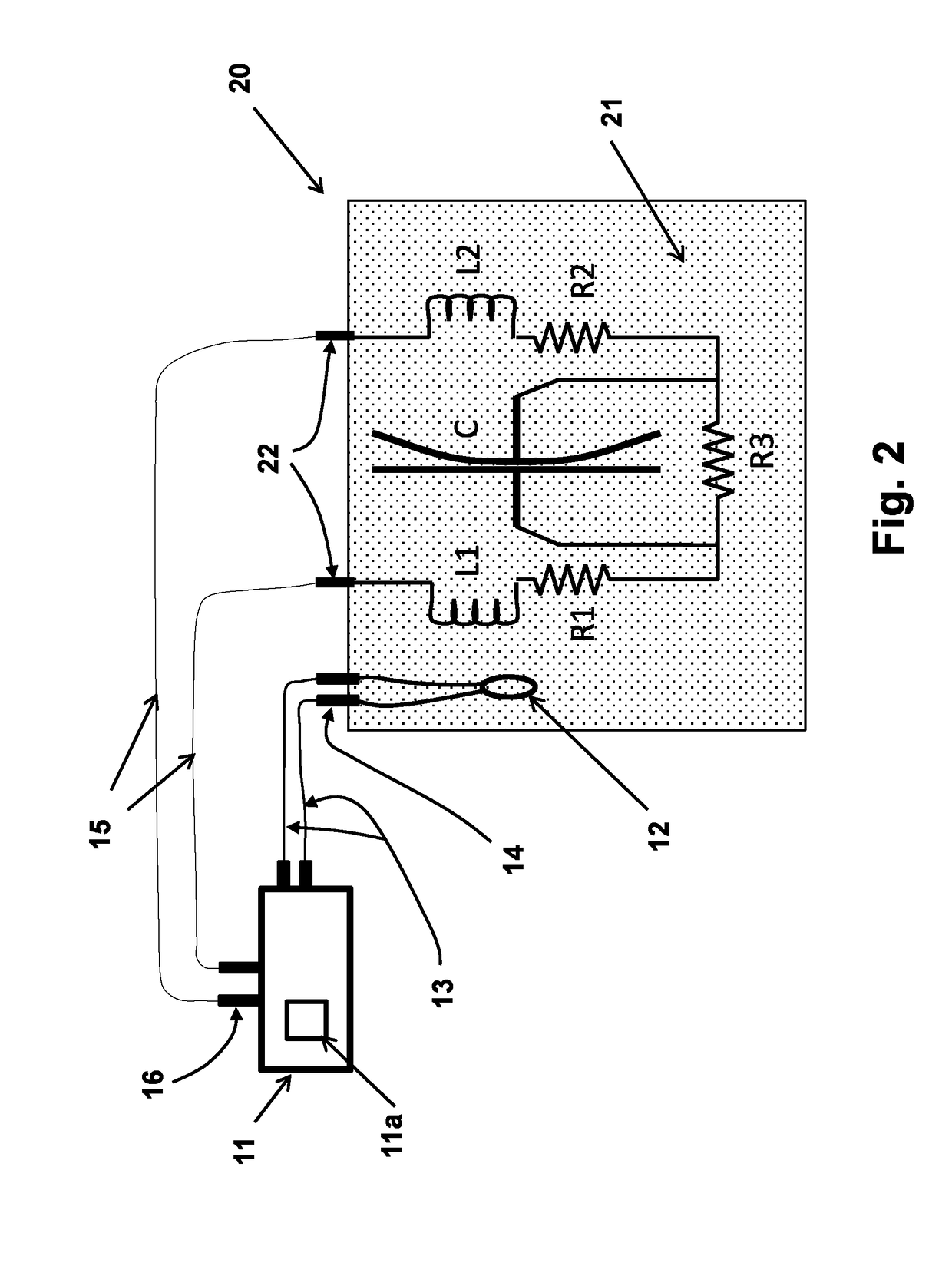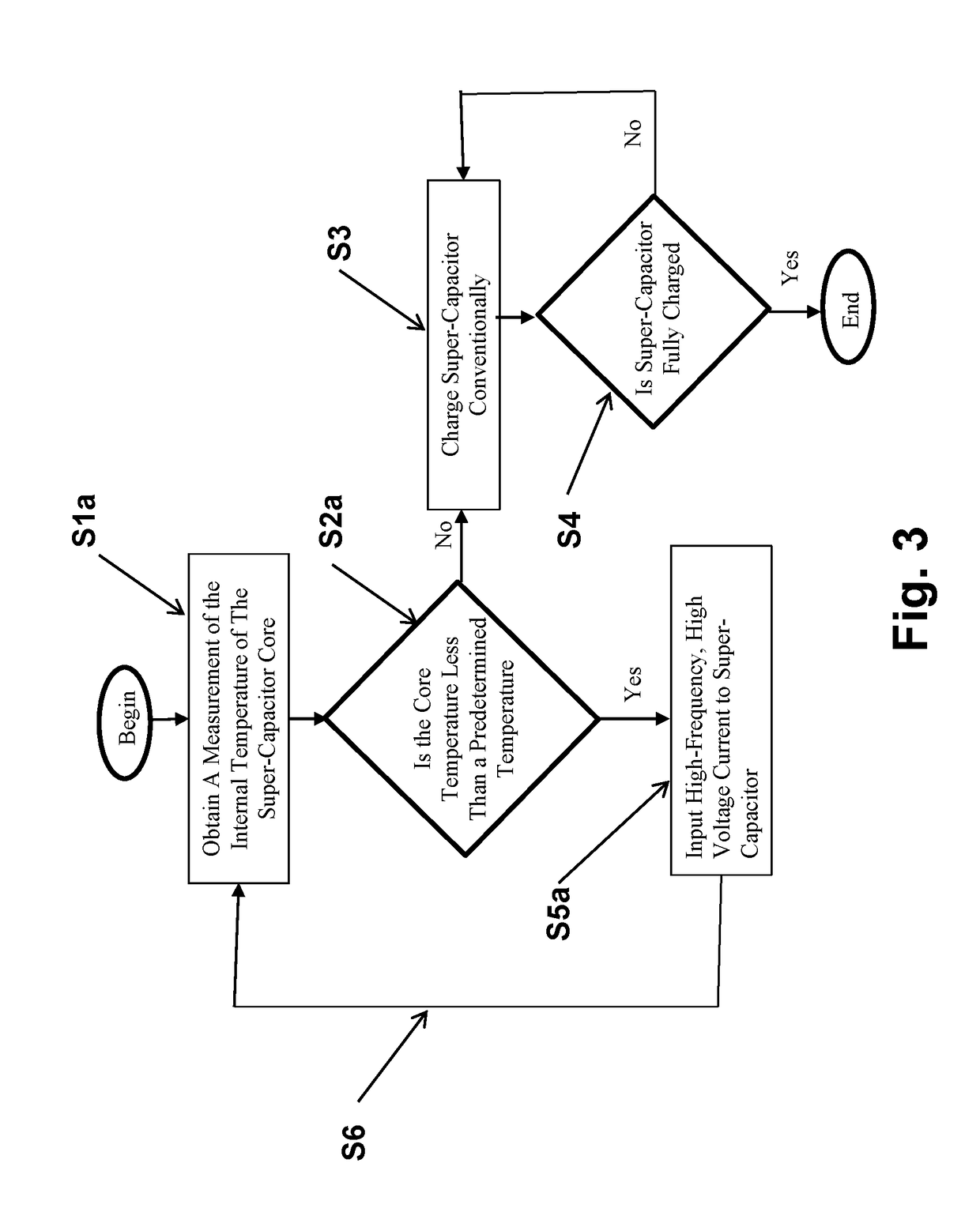Energy storage devices and methods for fast charging of energy storage devices at very low temperatures
a technology of energy storage devices and energy storage devices, which is applied in the field of energy storage devices, can solve the problems of user inability to charge, relatively long time, and the inability of charging methods and devices for currently available rechargeable batteries, such as lithium ion batteries, to charge these batteries at low temperatures, so as to minimize the amount of changes and modifications, the effect of fast ra
- Summary
- Abstract
- Description
- Claims
- Application Information
AI Technical Summary
Benefits of technology
Problems solved by technology
Method used
Image
Examples
first embodiment
[0052]In the first embodiment shown schematically in FIGS. 2, 3 and 5, a supercapacitor charger unit 11 having an internal processor 11a would first obtain the internal temperature of the supercapacitor core at step S1a or S1b. Such processor comprises a hardware, component such as a PLC or CPU and can include software and a memory storing such software and also storing data such as predetermined values used in the methods described below. In applications, such as munitions in which the munitions has been stored at the ambient temperature, the supercapacitor core temperature may be obtained by measuring the ambient temperature at step S1a and approximating the internal temperature of the supercapacitor core using some function of the ambient temperature, such as equating the ambient temperature to the supercapacitor core temperature. Alternatively, the supercapacitor core temperature can be directly measured by an internal sensor 12 (such as a thermocouple based sensor or other temp...
embodiment 300
[0103]An embodiment 300 of the Lithium ion charging and discharging unit is shown in the block diagram of FIG. 13. Although the unit 300 can be used to solely charge lithium ion batteries at low temperatures, the unit 300 is intended for use as a charging and discharging unit for Lithium ion batteries at all temperatures including at low temperatures.
[0104]It is appreciated here that for Lithium battery charging low temperature is intended to indicate those battery core temperatures at which DC currents (continuous or pulsed or other variations known in the art or the like) causes damage to the battery or that the battery cannot effectively be charged. In the Lithium ion battery discharging process, low temperature is intended to indicate temperatures at which the Lithium ion battery discharge rate is significantly lower than its normal rate. In Lithium ion batteries the latter temperatures are generally lower than those for safe charging of the battery.
[0105]The unit 300 is powered...
embodiment 380
[0114]In the embodiment 380 of FIG. 17, the high frequency AC current producing generator element 306a is powered from an external source 302. External powering of the AC current generator 306a may be necessary in certain situations, for example when the charged battery core is at such a low temperature that cannot provide enough power to the AC current generator 306a or that it cannot provide enough power to raise the core temperature to the required operating temperature in short enough period of time. If such situations are not expected to be encountered, the AC current generator 306a may be powered directly by the Lithium ion battery 301 itself or after an initial external powering period. The embodiment of FIG. 18 illustrates such a discharging control unit 400 in which the AC current generator 306a of the discharging control unit is powered by the battery 301 itself.
[0115]The embodiment 400 shown in FIG. 18 is similar in functionality and design to the embodiment 380 of FIG. 1...
PUM
| Property | Measurement | Unit |
|---|---|---|
| capacitance | aaaaa | aaaaa |
| rate voltage | aaaaa | aaaaa |
| rated voltage | aaaaa | aaaaa |
Abstract
Description
Claims
Application Information
 Login to View More
Login to View More - R&D
- Intellectual Property
- Life Sciences
- Materials
- Tech Scout
- Unparalleled Data Quality
- Higher Quality Content
- 60% Fewer Hallucinations
Browse by: Latest US Patents, China's latest patents, Technical Efficacy Thesaurus, Application Domain, Technology Topic, Popular Technical Reports.
© 2025 PatSnap. All rights reserved.Legal|Privacy policy|Modern Slavery Act Transparency Statement|Sitemap|About US| Contact US: help@patsnap.com



